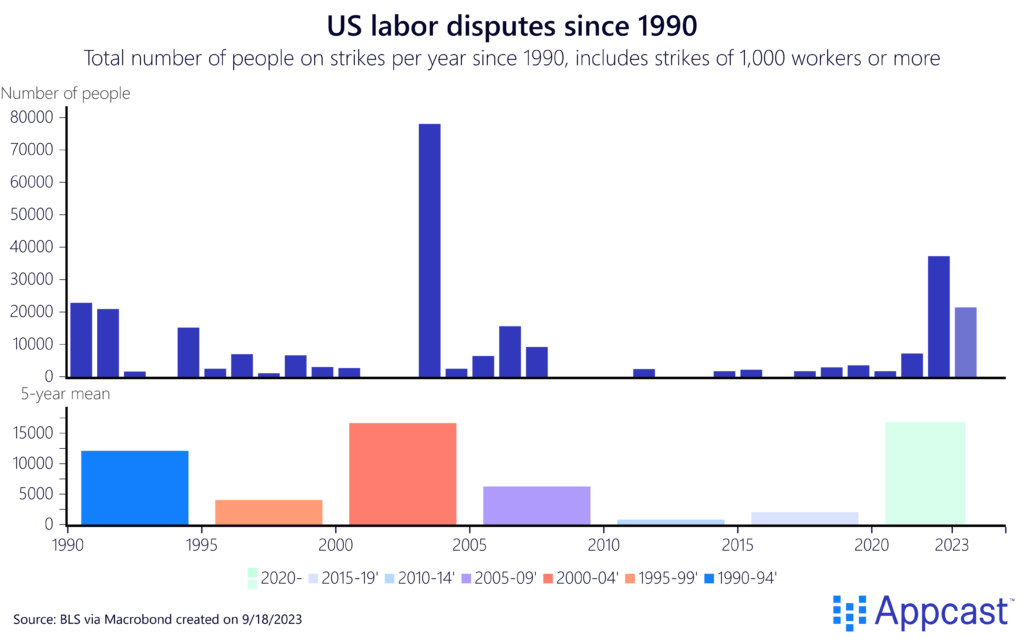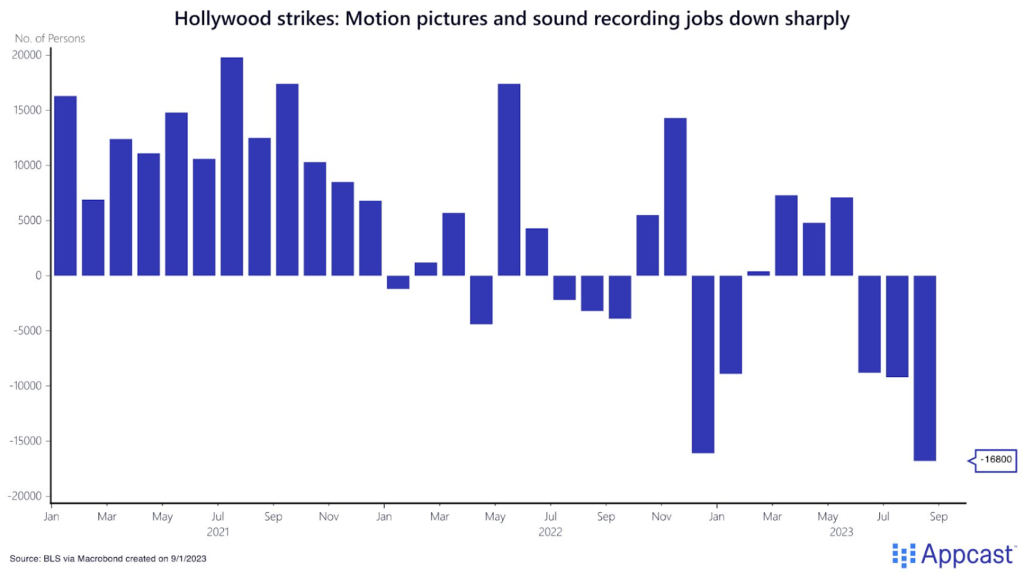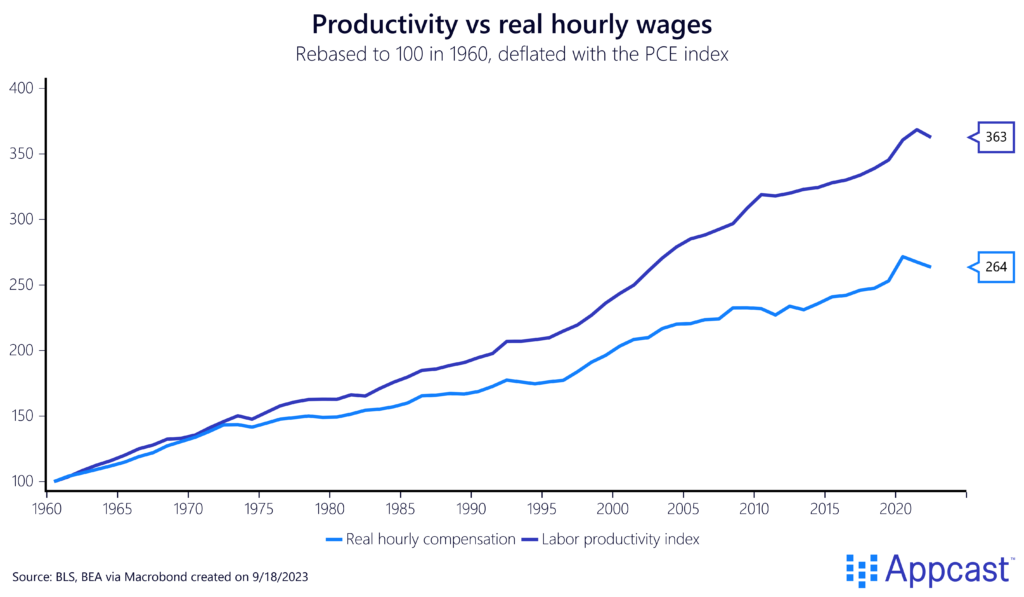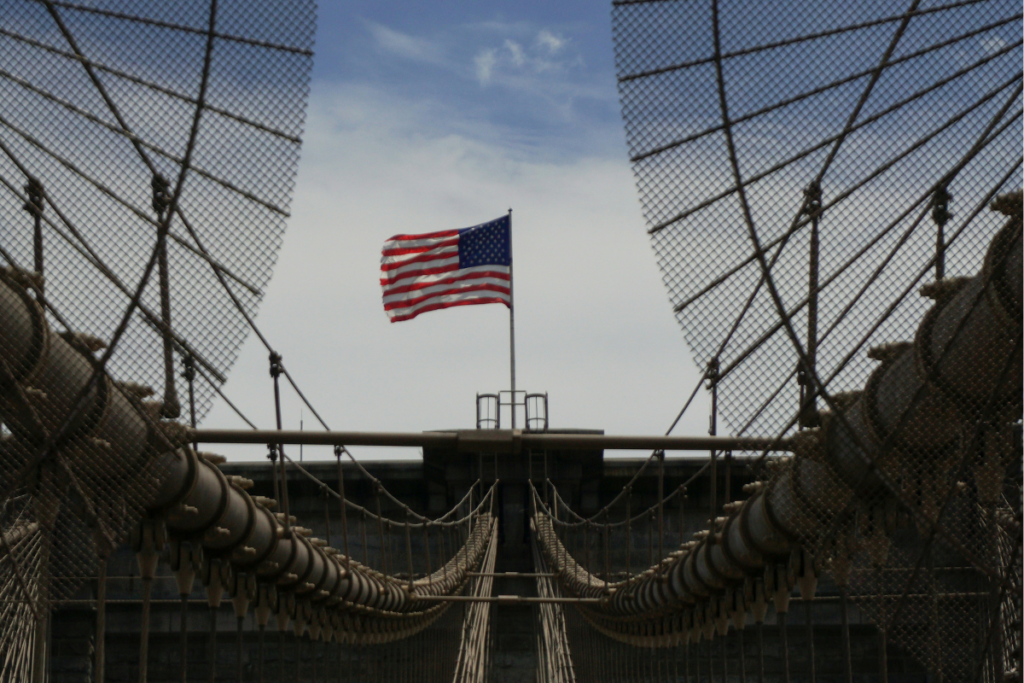Organized labor has been the hottest trend of the summer. The picket line has replaced the red carpet in Hollywood. The U.S. economy narrowly missed a disaster when UPS and unionized employees came to a last minute agreement. And, just last week, the United Auto Workers union began a historic strike at three of America’s largest automakers.
While the level of organization is still nowhere near the highs seen in unions’ heyday, there has been a notable shift in sentiments on unionized labor in the United States. It has been a “hot labor summer,” but falling temperatures won’t be enough to cool the tensions between employers and their workers.
Moving into a new season of labor bargaining?
The strikes highlighted above are only the tip of the iceberg for this year of union activity. Following a trend that began in 2022, 2023 promises to be one of the busiest years of strikes in decades. The five-year mean of people involved in strikes with more than 1,000 workers from 2020-2023 already challenges the period of 2000-2005, the most active period in the three decades since 1990.

Looking at smaller strikes tells a similar story. The Cornell ILR labor action tracker has already recorded 278 labor actions in 2023, following over 400 recorded in 2022. The tight labor market and the dramatic rethinking of the traditional way of work during the pandemic has prompted workers across the United States to take action. And it is paying off: The UPS strike above has not been the only impressive win in this period of organization and labor action. Labor unions have obtained some of the largest first-year pay increases in contracts in thirty years.
Not only are unions winning in the negotiation room, they are also winning public support. In 2023, 67% of Americans approve of labor unions according to Gallup, down from last year’s 71% but still higher than the three-year average. Public opinion is increasingly siding with unions, especially in these high-profile strikes.
Hot labor summer…
The Writers Guild of America (WGA) began their strike in early May, citing both traditional and existential issues with their studio employers. The WGA demanded increased compensation, a correction of residuals that have withered in the streaming era, and protections against artificial intelligence used in writing. The studios and writers failed to strike a deal, and the WGA took to the picket lines starting May 1, 2023, beginning one of the longest Hollywood strikes in history.
In July, the Screen Actors Guild and American Federation of Television and Radio Artists (SAG-AFTRA) joined the fold, with similar concerns on residuals and the use of artificial intelligence. The first Hollywood dual-strike since the 1960s is the most high-profile strike of recent years, with stars on the picket line and highly anticipated movies being pushed back.
These strikes have had devastating impacts on the industry: Motion picture and sound recording employment was down sharply in August. And there is little to suggest that this historic strike will end anytime soon: The Alliance of Motion Picture and Television Producers (AMPTP) and the two sister unions have not come any closer to an agreement despite the job losses and missed production.

While the Hollywood strikes may be the most high-profile labor action in recent years, the impact on the economy on the whole is more restrained than other potential strikes this past summer. The delay of Dune was painful, yes, but the United Parcel Service almost-strike would have had disruptive impacts on the supply chain. In July, the threat of a UPS strike loomed large, as even a 10-day strike would have cost the U.S. economy more than $7 billion.
UPS and teamsters managed to reach a deal in late July, the most lucrative agreement in the history of UPS, per Teamster President Sean M. O’Brien. The new contract included historical wage increases for both full- and part-time union workers, abolished forced overtime on days off, and contributed to better work-life balance overall. The UPS win is just one of many in the pro-labor, post-pandemic landscape.
…And a more heated fall
The Hollywood strikes were predicted to be wrapped up by Labor Day but broader labor tensions have only risen as temperatures drop.
United Auto Workers (UAW) brought aggressive demands to all three American automakers: GM, Ford, and Stellantis. Citing record corporate profits, combative UAW head Shawn Fain called for wage increases of 36%. Just last week, autoworkers and automakers failed to come to a contract agreement, and a historic strike began. For the first time, the UAW is striking against all three American automakers. Nearly 13,000 workers are on strike in a coordinated labor movement – such that just 9% of union members have joined picket lines, while other workers can continue to collect wages.
Real wage gains have struggled to keep up with productivity across the economy, but the auto manufacturing sector in particular has seen more or less flat wage growth in recent decades. In this tight labor market, the UAW feels it’s time to regain that lost growth.

But it is not only increased wages that UAW is fighting for: Union members also called for a four-day workweek with no pay cuts. The shortened workweek has become a popular talking point in recent years and calls have heightened with the emergence of potential productivity gains stemming from artificial intelligence. The UAW is boldly seizing this moment of increased worker power to demand a new vision for manufacturing workers.
This era of labor activity does not come close to the incredible levels in the mid-20th century but this season of strikes speaks to the resurgence of worker power in the post-pandemic period. Even with the labor market cooling, the power remains firmly in the hands of workers as demand far outstrips supply. The future of work will feature smaller workforces, increased productivity, and the availability of life-changing technology. Workers want to define their place in it today before it’s too late.







